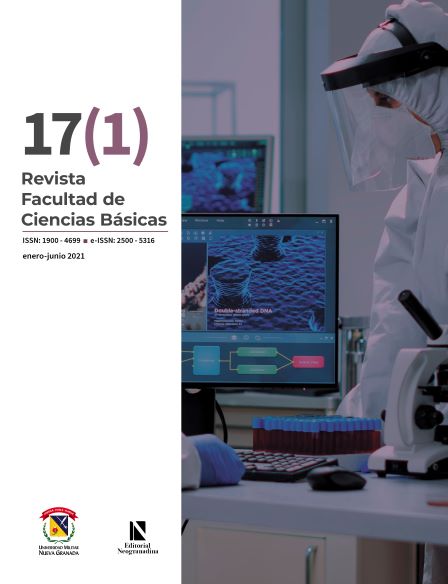Some Classical Methods in the Analysis of an Aedes aegypti Model
Abstract
The Taylor series approximation is often used to convert non-linear dynamical systems to linear systems, while the Hartman-Großman theorem analyzes the local qualitative behavior of the non-linear system around a hyperbolic equilibrium point. The global stability of an equilibrium point in the Lyapunov sense is based on the principle that if the equilibrium point is disturbed and the flow of the system is dissipative, then the system must be stable. This article applies these methods to an ecological Aedes aegypti model, whose local and global stability are characterized by a population growth threshold. In conclusion, the classical theory of dynamical systems, validated computationally, yields theoretical results in favor of controlling the local population of Aedes aegypti. It becomes usable if the proposed model is reinforced with the estimation of the parameters that describe the relationships between stages (aquatic and aerial) of the mosquito population and the inclusion of vector control strategies to protect people from the viruses transmitted by Aedes aegypti.
Downloads
References
S. Jana and T. K. Kar, "A mathematical study of a prey-predator model in relevance to pest control," Nonlinear Dyn., vol. 74, no 3, pp. 667-683, 2013. DOI: https://doi.org/10.1007/s11071-013-0996-3
W. M. Solano, "Dos modelos simples del método de las moscas estériles para la eliminación de la mosca de la fruta," Pro Math., vol. 16, no. 31-32, pp. 165-181, 2002.
J. Páez, D. Jungmann, and S. Siegmund, "Modeling and Analysis of Integrated Pest Control Strategies via Impulsive Differential Equations," Int. J. Differ. Equ., vol. 2017, pp. 1-18, 2017. DOI: https://doi.org/10.1155/2017/1820607
M. Derouich and A. Boutayeb, "An avian influenza mathematical model," Appl. Math. Sci., vol. 2, no. 36, pp. 1749-1760, 2008.
G. Q. Sun and Z. K. Zhang, "Global stability for a sheep brucellosis model with immigration," Appl. Math. Comput., vol. 246, pp. 336-345, 2014. DOI: https://doi.org/10.1016/j.amc.2014.08.028
J. Zhang, Z. Jin, and Y. Yuan, "Assessing the spread of foot and mouth disease in mainland China by dynamical switching model," J. Theor. Biol., vol. 460, pp. 209-219, 2019. DOI: https://doi.org/10.1016/j.jtbi.2018.09.027
A. Elaiw, "Global analysis of a cocirculating target cells hiv model with differential drug efficacy and non-linear incidence rate," Miskolc Math. Notes, vol. 17, no. 1, pp. 231-244, 2016. DOI: https://doi.org/10.18514/MMN.2016.1287
J. M. Epstein, Nonlinear Dynamics, Mathematical Biology, and Social Science: Wise Use of Alternative Therapies. United States: crc Press, 2018.
J. M. Krueger, "Parameter Estimation Methods for Ordinary Differential Equation Models with Applications to Microbiology," Ph.D. dissertation, Virginia Tech, Blacksburg (VA), 2016.
T. T. Yusuf and F. Benyah,"Optimal control of vaccination and treatment for an sir epidemiological model," World J. Model. Simul., vol. 8, no. 3, pp. 194-204, 2012.
T. Asada, "Modelando la inestabilidad financiera," Rev. Eur. Econ. Polit. Econ. , vol. 9, pp. 215-232, 2012.
S. Ghosh, A. Deb, and G. Sarkar, "A new recursive method for solving state equations using Taylor series," Int. J. Electr. Comput. Eng., vol. 1, no. 2, pp. 22-27, 2012.
A. Abad, R. Barrio, M. Marco-Buzunariz, and M. Rodríguez, "Automatic implementation of the numerical Taylor series method: A Mathematica and Sage approach," Appl. Math. Comput., vol. 268, pp. 227-245, 2015. DOI: https://doi.org/10.1016/j.amc.2015.06.042
R. Barrio, M. Rodríguez, A. Abad, and F. Blesa, "Breaking the limits: the Taylor series method," Appl. Math. Comput., vol. 217, no. 20, pp. 7940-7954, 2011. DOI: https://doi.org/10.1016/j.amc.2011.02.080
S. N. Li and B. Y. Cao, "On defects of Taylor series approximation in heat conduction models," Int. J. Heat Mass Transf., vol. 98, no. 2016, pp. 824-832, 2016. DOI: https://doi.org/10.1016/j.ijheatmasstransfer.2016.03.067
V. Šátek, F. Kocina, J. Kunovsky, and A. Schirrer, "Taylor series based solution of linear ode systems and matlab solvers comparison," ifac, vol. 48, no. 1, pp. 693-694, 2015. DOI: https://doi.org/10.1016/j.ifacol.2015.05.210
L. Perko, Differential Equations and Dynamical Systems. New York: Springer-Verlag, 1996. DOI: https://doi.org/10.1007/978-1-4684-0249-0
D. S. Graça, N. Zhong, and H. S. Dumas, "The connection between computability of a non-linear problem and its linearization: The Hartman Grobman theorem revisited," Theor. Comput. Sci., vol. 457, no. 2012, pp. 101-110, 2012. DOI: https://doi.org/10.1016/j.tcs.2012.07.013
M. W. Hirsch, S. Smale and R. L. Devaney, Differential Equations, Dynamical Systems, and an Introduction to Chaos. New York: Academic Press, 2012. DOI: https://doi.org/10.1016/B978-0-12-382010-5.00015-4
S. M. O'Regan, T. C. Kelly, A. Korobeinikov, M. J. O'Callaghan, and A. V. Pokrovskii, "Lyapunov functions for sir and sirs epidemic models," Appl. Math. Lett., vol. 23, no. 4, pp. 446-448, 2010. DOI: https://doi.org/10.1016/j.aml.2009.11.014
G. H. Moore, "The evolution of the concept of homeomorphism," Hist. Math., vol. 34, no. 3, pp. 333-343, 2007. DOI: https://doi.org/10.1016/j.hm.2006.07.006
J. E. Marsden, A. J. Tromba, and M. L. Mateos, Cálculo vectorial (vol. 69). Addison-Wesley Iberoamericana, 1991.
S. Wiggins, Introduction to applied non-linear dynamical systems and chaos (Vol. 2). Springer Science & Business Media, 2003.
H. K. Khalil and J. W. Grizzle. Non-linear systems (vol. 3). Upper Saddle River, NJ: Prentice Hall, 2002.
J. A. Olarte-García and A. Muñoz-Loaiza, "Un modelo de crecimiento poblacional de Aedes aegypti con capacidad de carga logística," Rev. Mat., vol. 25, no. 1, pp. 79-113, 2018. DOI: https://doi.org/10.15517/rmta.v1i25.32233
H. M. Yang, M. D. L. D. G. Macoris, K. C. Galvani, M. T. M. Andrighetti, and D. M. V. Wanderley, "Assessing the effects of temperature on the population of Aedes aegypti, the vector of dengue," Epidemiol. Infect., vol. 137, no. 8, pp. 1188-1202, 2009. DOI: https://doi.org/10.1017/S0950268809002040
Copyright (c) 2021 Revista Facultad de Ciencias Básicas

This work is licensed under a Creative Commons Attribution-NonCommercial-NoDerivatives 4.0 International License.











